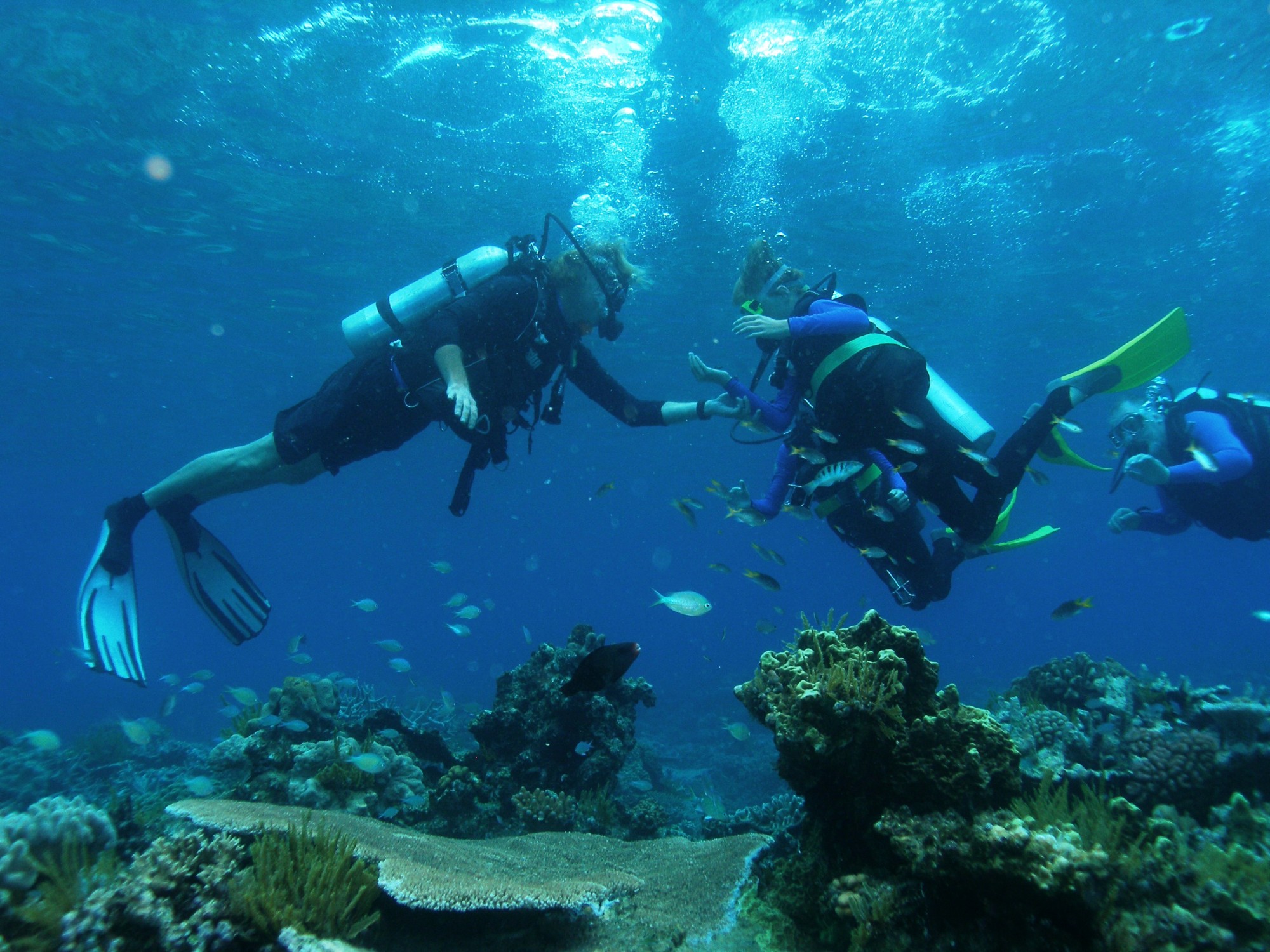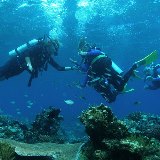
Cautionary tales about going to altitude after diving describe one of the core rules taught in any open-water course. But divers often have questions about specific recommendations because the rules occasionally change. At Passions of Paradise, we strive to use the most current scientific data available to keep our divers safe when it comes to flying after a dive trip. Here are answers — using the most scientifically up-to-date information we currently have — to three of the most common altitude and diving questions we are asked on our medical information line.
Can I dive immediately after flying?
Short answer: Yes.
Diving after flying does not in itself create a decompression problem since flying leaves you with less inert gas in your tissues than would be there had you stayed at ground level unless you land at high altitude. However, as always, after a flight (or any activity) you should question your fitness to dive. Air travel can leave divers fatigued, improperly nourished, possibly somewhat dehydrated, generally stressed, and disorganized. Long-distance travel compounds the problem, particularly when multiple time zones are crossed. The more you or any member of your dive team are affected, the longer the recovery time you need to build into your planning before starting to dive. Most important is that you and your dive partners need to honestly and objectively assess your condition. It is not worth compromising your safety — which could ruin more than your whole trip — because you or someone else is in a hurry to make the first dive.
How long do I have to wait before flying after diving?
Short answer: 24 hours.
The concerns of heading to altitude too soon after diving are the same as those when you ascend from your dive too quickly because the same scientific principles apply: going to altitude takes you to an area of lower outside pressure, meaning residual nitrogen still dissolved in your blood can come out of solution as bubbles if the pressure reduction is not slow enough to let your body off-gas safely. Staying at ground level before going to altitude is like doing a decompression stop. Deeper and longer dives will leave you with more residual nitrogen, thus requiring a longer pre-flight surface interval. The time you should wait relates directly to the pattern of diving completed.
We recommend a general practice of allowing a surface interval of 24 hours or more before flying after diving. This should bring reasonable peace of mind and help to provide a buffer for unexpected problems, like a loss of cabin pressurization during flight. Ultimately, it is better safe than sorry and almost every location has enough to entertain you for the final day.
No plane, no problem — right?
Short answer: Wrong.
Many dive destinations offer a variety of activities below and above the water. In the Hawaiian Islands, for example, you could dive in the morning and spend the afternoon 3,000 metres (10,000 feet) above sea level at the crater of a volcano. Some divers who would not think about boarding a plane so soon after diving could forget about the similar risk of heading up a mountain to enjoy the view. Luckily for most divers visiting Cairns, this is not a problem; if one were to return from a day of diving and head up to the tablelands, the maximum altitude is between 500 and 1,280 m (1,640 and 4,200 ft), and not usually an issue.
In whatever form it comes, the bottom line is that altitude exposure is altitude exposure. There is no dodging the considerations they require, and ignoring them significantly increases your risk of being injured. So remember to keep your feet on the ground after you dive — if only for a little while.

